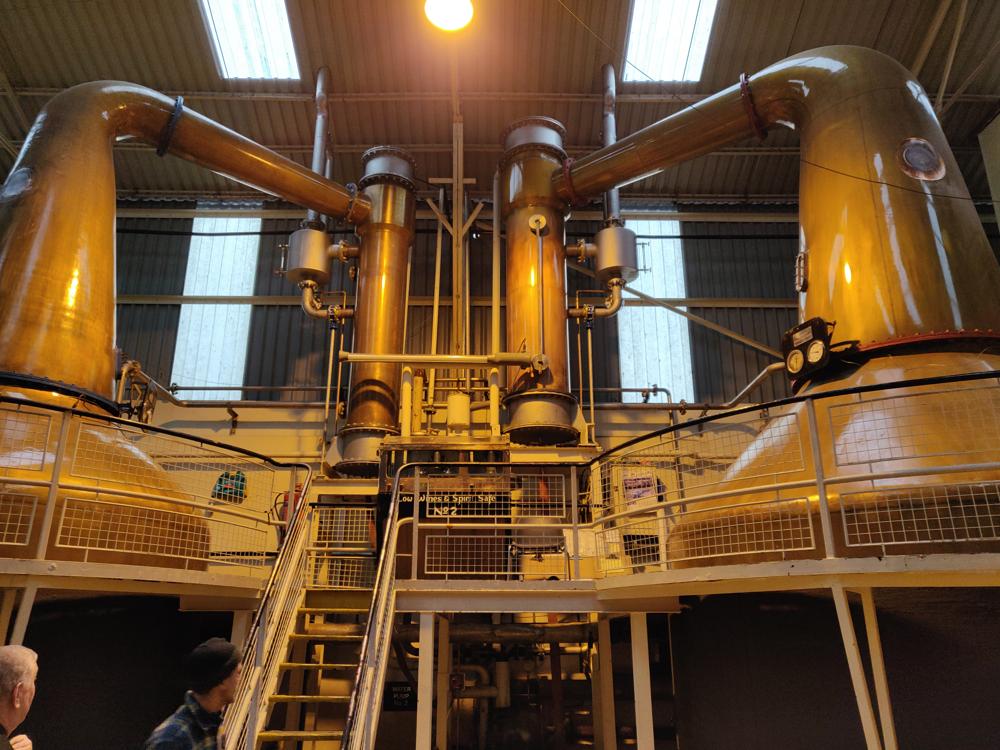The Condenser
Published July 24, 2020

What is a condensor?
A condensor is a device for re-condensing new make spirit upon leaving the still. The steam will arrive in the condenser, which will be filled with water. The water will extract the heat from the steam, which will then condense and the cooler unit will flood.
There are two main types of condenser used at distilleries: ‘Shell and Tube’ condensers and ‘Worm Tub’ condensers. The type of condenser used by a distillery hugely effects the flavour of the whisky, with shell and tube condensors creating lighter spirits that those produced by a worm tub. A third kind, common among American distillers is the Dephlegmator
Shell and Tube Condensers
A shell and tube condensers consists of a long hollow cylinder filled with cold water, which contains a large number of copper pipes. When the alcohol vapor touches the cold pipes, it cools down and becomes liquid. Due to the relatively high ratio of steam to copper surface, whiskeys produced with shell and tube have a lighter character.
Worm Tub Condensers
The worm tub is usually in a large tank or container with a cooling loop (worm) immersed in water.
Worm tubs are the older more traditional method of recondensing the distilled spirit. They were, and in some distilleries still are, large vats of cold water with a single, coiled copper tube, or ‘worm’. The worm is used to obtain a rich spirit character with as little copper contact as possible during slow recondensing in the worm.
Worms tubs are generally prized for imparting a dense meaty quality with a heavy body, oily and sulphurous to the distillate. Today Worm tubs are still in use at 16 Scottish distilleries
Distilleries with worm tub condensers
- Ballindalloch
- Balmenach
- Benrinnes
- Glenkinchie
- Cragganmore
- Craigellachie
- Dalwhinnie
- Edradour
- Glen Elgin
- Mortlach
- Oban
- Pulteney
- Royal Lochnagar
- Speyburn
- Springbank
- Talisker
Of these Oban’s worm tubs are perhaps the most interesting as they contain two worms nested one within the other.
Dephlegmator
A dephlegmator is a condenser that condenses vapors and is supposed to feed them back to the still before the actual condenser. This selective condensement of higher weight compounds allows for more specific separation of components ensures a higher separation performance.
A mixture of chemical substances can not be separated from one another in the desired purity by distillation if there is also a mixture in the steam. In order to let only the lower-boiling liquid pass, the temperature in the dephlegmator is kept just above the boiling point of the liquid. The heavier boiling liquid condenses in the dephlegmator and is returned to the boiler. Use of a Dephlegmator can thus make heavier or lighter spirit.
Previous

